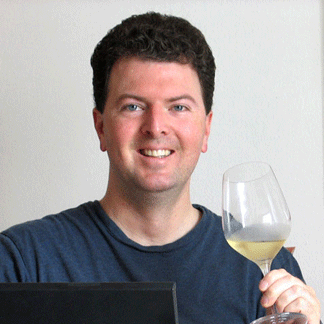The Buddha of Biodynamic winemaking, Nicolas Joly, calls flower heads of yarrow (also known as the nosebleed plant and old man’s pepper) fermented in a cow’s horn and buried in the soil “telephone numbers to connect to a specific process.” Other magicians hang stag bladders stuffed with yarrow in an Alder tree for similar effects. So when I read that Alder Yarrow is “the world’s number one wine blogger” I thought someone was taking the biodynamic piss.

Especially when I went on to discover that Alder Yarrow notes that Eben Sadie’s icon wines are certified biodynamic. “In addition to being Biodynamically produced, Sadie’s wines are handcrafted to an extreme… per the requirements for Biodynamic production (though it’s clear Sadie would be doing it anyway, even if there were no such thing as Biodynamic certification) the wines are never fined or filtered, and are only fermented using native yeasts.” As the Farmer Brown chicken ad puts it “they taste so good because they eat so good.”
Invited to Cape Wine 2008 by WOSA (Wines of SA, the exporters’ mouthpiece), Alder’s first ten hours at the show were disappointing: “I had also tasted some very good wine, a few excellent wines, but sadly, none that thoroughly wowed me. This realization itself was part of my ongoing education, as much as it was a slight disappointment that after traveling so far, the country did not seem to make truly world-class wines that could compete with the best from other countries. But then I tasted the wines made by a young winemaker named Eben Sadie, and everything changed.”
Strange that Alder had not heard of Eben as his Columella 05 – the vintage before the one Alder tasted at CW2008 – is the highest rated SA wine ever by US publication Wine Spectator and surely should have been top of his “to taste” list.
Back on the subject of yarrow, Adalbert Graf Von Keyserlingk noted back in the thirties that “yarrow is also very helpful planted around cereal crops or vegetable beds to create a special ‘space’.” As to the reason it is hung in an Alder tree inside a stag’s bladder, count becomes poet:
“The gesture we see in a stag’s antlers is one of opening up towards the heavens. But he is actually doing this with his bloodstream, for his antlers do not develop from skin that hardens, as in the cow, but out of the bloodstream. A cow’s horns and claws (sic) regulate the vital processes in the inner organism, whilst the stag is able, having antlers, to take the surrounding world, including the influences that come from the outer cosmos, into himself.
The stag takes these influences into itself in an A-gesture, opening up to the world; this then becomes an E-gesture in the kidney, and in the bladder finally an O-gesture. The process is open to an artistic approach. There is a flowing movement from antler to bladder and the latter can thus be the protective vessel in which yarrow responds to influences in a way where ‘the spirit always wets its finger with sulphur when it wants to take the different substances – carbon, nitrogen, etc. – to their appropriate place in the organism.’ The last quote coming from Rudolf Steiner.
Steiner himself was also big on bladders, noting “the bladder of the stag is connected … with the forces of the cosmos. Nay, it is almost the image of the cosmos. We thereby give the yarrow the power quite essentially to enhance the forces it already possesses to combine the sulphur with other substances.”
With stags scarce on the Paardeberg of late, springbok horns and bladders will obviously do the trick. Now all we need is the fynbos equivalent of yarrow for a fully artistic approach to winemaking in the Swartland.



